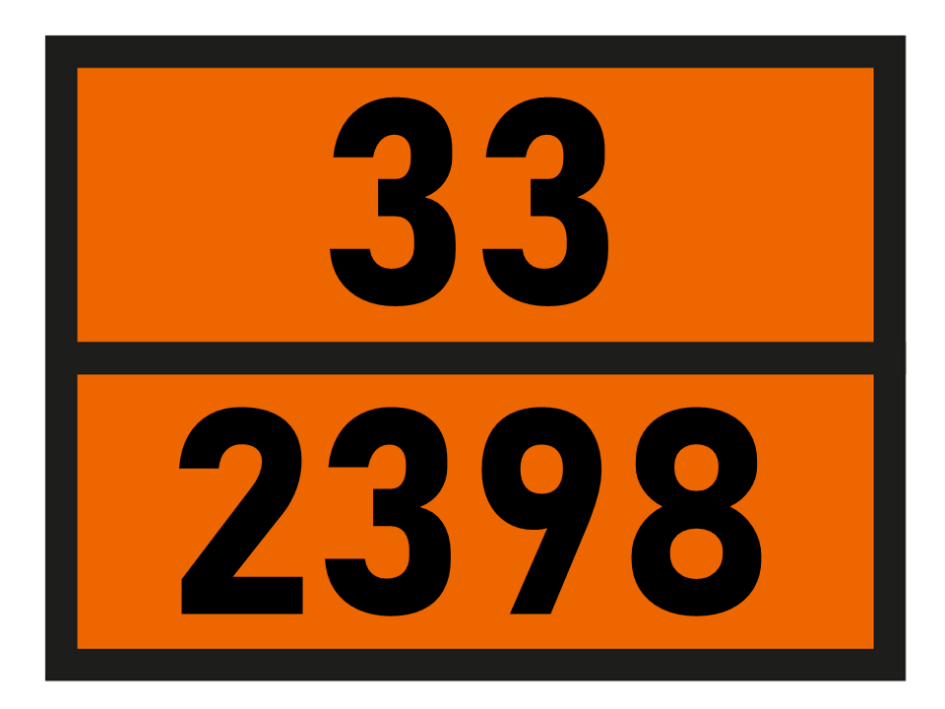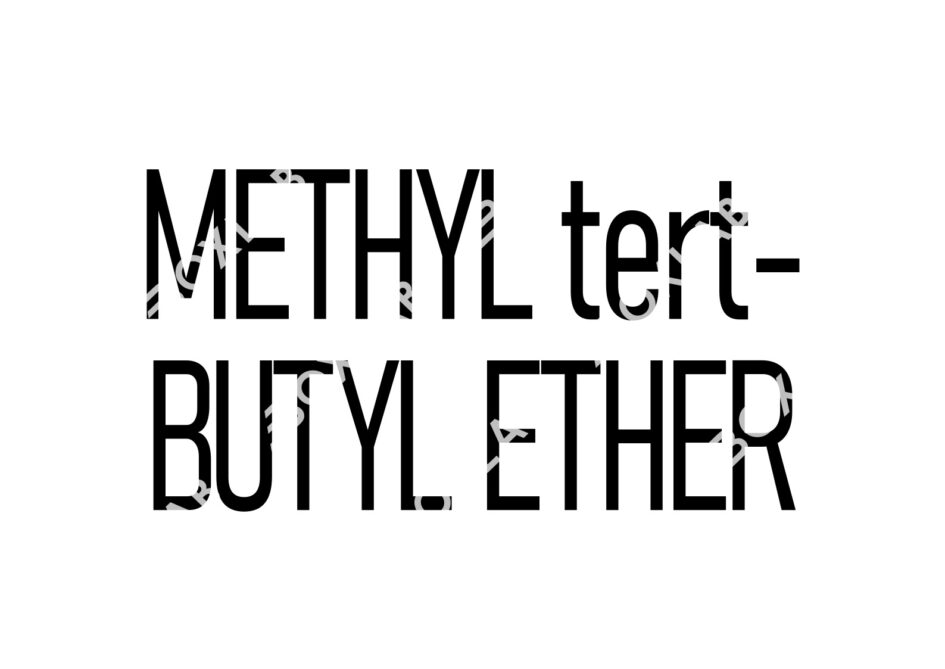Date:
January 29, 2024
Categories:
Industry News, Products, Tips & Tricks,
Transport code 33 / 2398 in hazardous goods transport
Properties of METHYL-tert-BUTYLETHER
1. easy flammability and vapor evolution:
METHYL-tert-BUTYLETHER is manifested by its flammability, producing hazardous vapors. The flash point is below 23°C, indicating a potential explosion hazard.
2. hazard to eyes and respiratory tract:
Direct contact with the eyes or inhalation of vapors can have serious health effects. The hazard goes beyond simple irritation and requires specific protective measures.
insolubility in water and specific gravity:
The substance is immiscible or only partially miscible with water (less than 10%). In addition, it is lighter than water, which poses particular challenges in the event of environmental spills.
Handling hazards
1. pressure increase and explosion hazard:
Exposure of containers to heat may cause a dangerous increase in pressure which could result in an explosion.
2. formation of explosive mixtures:
Reactivity with air poses the risk of explosive mixtures forming, which is an additional threat.
3. toxic vapors and invisible dispersion:
METHYL-tert-BUTYLETHER emits toxic and irritating vapors when exposed to intense heat or fire. These can be invisible and spread along the ground, even in sewers and basements.
Personal protection and first aid:
1. self-contained breathing apparatus and protective clothing:
Handling requires self-contained breathing apparatus and chemical-resistant clothing, especially if there is a risk of contamination. If necessary, additional fire protection clothing in accordance with EN 469 is required.
2. first aid in case of contact:
In case of eye contact, rinse with water for at least 15 minutes and seek medical attention immediately. In case of skin contact, remove contaminated clothing and rinse affected skin thoroughly with soap and water.
Measures in case of substance leakage and fire:
1. general and specific measures:
Proceed with the wind, eliminate ignition sources and limit the number of emergency personnel in the danger area. People in the vicinity should be asked to stay indoors and close windows.
2. substance leakage and firefighting:
Plug leaks if possible, collect leaked product, check for explosive atmosphere and use only explosion-proof equipment. In case of fire, cool container with water and extinguish with suitable extinguishing agents.
Rescue and assistance operations
1. safety precautions during recovery:
Ensure adequate grounding and use explosion-proof pumps when pumping. Recovery requires mineral oil resistant equipment and the collection of leaked product in ventilated containers.
2. after use:
Removal of protective clothing requires thorough cleaning with water/soap solution. Contaminated cleaning fluids must be retained to minimize environmental impact.
Products for labeling and safety:
Special products are essential for labeling hazardous goods. These include
Orange warning signs:
These signs show the UN number and hazard number. Our warning signs have been specially developed for the safe labeling of dangerous goods in accordance with ADR, RID, IATA and IMDG Code
Placards:
The color and number of the hazard label usually indicates the hazardous goods class. We also provide the additional label for heated substances in this format.
Hazard labels:
These labels indicate the hazard classes and subclass of the actual package. They are available in the standard 100x100mm format.
Technical names:
Provide clear identification of hazardous substances in accordance with the latest IMDG Code 2023 regulations.
Fields of application for METHYL-tert-BUTYLETHER:
METHYL-tert-BUTYLETHER (UN 2398) is used in various industries, mainly due to its chemical properties. Here are some uses for METHYL-tert-BUTYLETHER:
Solvent:
Due to its chemical structure, METHYL-tert-BUTYLETHER is suitable as a solvent for various substances. It can be used in the paint and varnish industry as well as in the production of coatings and adhesives.
Chemical synthesis:
The substance can serve as an intermediate in chemical synthesis. This could include the manufacture of other chemical compounds or products.
Cleaning agents:
In some cases, METHYL-tert-BUTYLETHER is used in cleaning products, especially when a high solvent capability is required.
Industrial processes:
In certain industrial processes METHYL-tert-BUTYLETHER can be used as a solvent or as a chemical component due to its properties.
The correct classification
The correct classification of substances for transportation, especially in the context of dangerous goods transportation, requires specialist knowledge and experience in the field of dangerous goods regulations. There are various experts and resources that can help with the classification of substances:
- Dangerous goods officers: many companies that transport dangerous goods have specially trained dangerous goods officers. These individuals are responsible for the safe handling, labeling and documentation of dangerous goods.
- Dangerous goods advisors: External dangerous goods advisors are experts who can support companies in the proper classification, labeling and documentation of dangerous goods. They have specialist knowledge of the applicable regulations and can help with the classification of substances.
- Authorities and regulatory bodies: The relevant national and international authorities and regulatory bodies, such as the Federal Office for Logistics and Mobility (BALM) in Germany or the United Nations Economic Commission for Europe (UNECE), provide guidelines and regulations for the transportation of dangerous goods. They can also answer questions about the classification of substances.
- Databases and resources: There are databases and resources that provide information on various hazardous substances and their classification according to international regulations. These can be used as reference works.
- Training courses and seminars: Attending training courses and seminars on the transportation of dangerous goods can help companies and individuals gain the necessary knowledge to classify substances correctly.
It is important to consult the relevant national and international regulations and guidelines and to always consult experts in case of uncertainties or questions to ensure that dangerous goods are transported safely and legally. The classification of substances is crucial to avoid accidents and hazards.
Get free advice now
Contact us today to find out more about our hazardous goods labels and other intralogistics solutions and to arrange a personal appointment.
Our philosophy
At BOXLAB Services, quality, service and customer satisfaction are our top priorities. Despite the economic challenges of inflation, we want to offer our customers high-quality dangerous goods labels such as hazard labels at attractive prices. Visit our website to discover the new prices and benefit from the extended ordering options. We are proud to continue to offer you first-class products and outstanding customer service.


